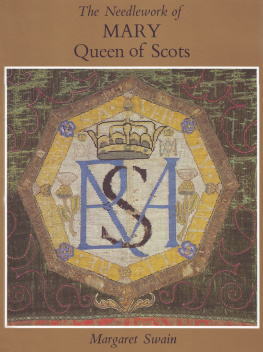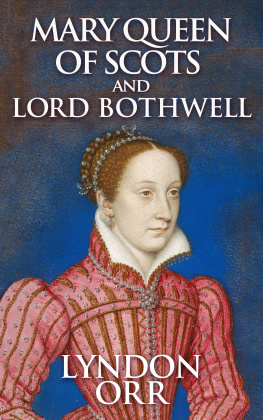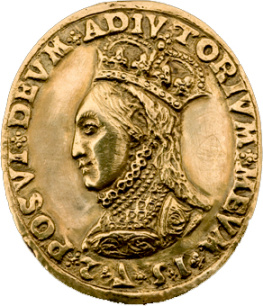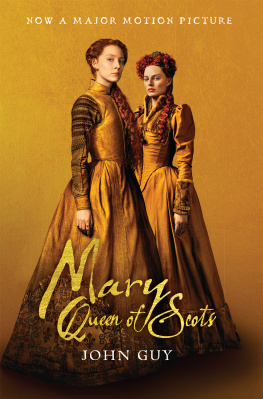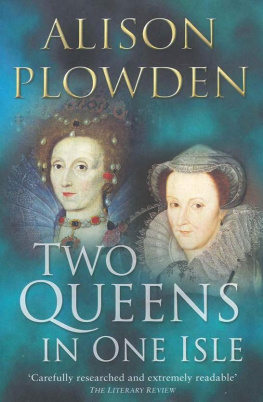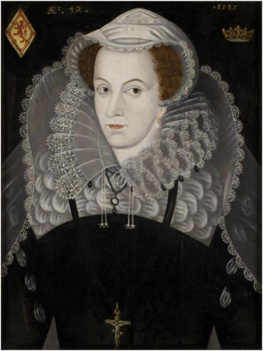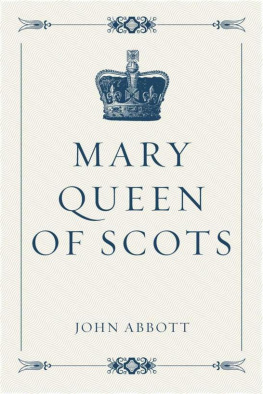The Book
The events of Mary Stuarts stormy life have provided a dramatic and recurring topic for literature of all kinds. However, although it is also well-known that a large body of needlework attributed to her exists, little attempt has been made to authenticate these pieces or to explain how such an energetic and impetuous woman could have found pleasure in the meticulous craft of embroidery.
This is the first comprehensive study of the Queen of Scots as a needlewoman, describing all the works associated with her, and for the first time every piece marked by her cipher or monogram is illustrated in full. As an understanding of her work is impossible without some reference to her public life, for those unfamiliar with it a brief biographical outline provides a framework for the main content of the book.
The author, an expert on the history of costume and textiles, constructs a fascinating picture of the quality of life at court in Marys time. The formative years spent in France, where elegance was reflected in all aspects of day to day living, from the sumptuous hangings and elaborate dress to the delicately embroidered personal linen, were to give her a taste for rich materials that was to remain with her throughout her unsettled life. Here she also learnt to look for ideas and designs for embroidery in the popular emblem books.
Mary may have learnt at court that needlework was an essential accomplishment for a woman, but the main interest in the pieces she produced lies in their deeply personal significance. The devising of works became an absorbing pastime in the years of imprisonment, and she found release from her sense of injustice in the symbols she embroidered on them.
This is not only a significant work in the history of costume and textiles, but sheds a new and interesting light on those aspects of Marys life about which little is known.
The Author
M ARGARET S WAIN grew up in Lancashire and was taught to embroider by her Grandmother even before she learned to read. She later trained as a nurse in London, married and after the war moved with her family to Edinburgh. While pursuing her strong interest in history she recognised the high quality of Scottish historical needlework, then little known, so she researched it, travelling widely, writing and working tirelessly to bring it to a wider audience. She lived in Edinburgh until her death in 2002.
She also researched more widely into the history of textiles, with a particular interest in the social factors causing a certain type of needlework to be made at a given period, and published many articles on the historical background of textiles in Apollo, The Connoisseur, Country Life, The Times, Furniture History, Costume, and Embroidery.
Her books include The Flowerers (1955), Historical Needlework (1970), Figures on Fabric (1980), Ayrshire and other Whitework (1982), Scottish Embroidery: Medieval to Modern (1986), Embroidered Stuart Pictures (1990) and Embroidered Georgian Pictures (1994). She advised and worked with institutions at home and abroad, from Holyroodhouse in Edinburgh to the Metropolitan Museum in New York, organized exhibitions of needlework and costume and was a popular lecturer. In 1981 she received an honorary MA from Edinburgh University, and in 1989 an MBE for her work on embroidery and tapestries.
A Review
It is rare to find an embroidery book that combines all the excitement and drama of an historical novel with detailed information on techniques, materials and pattern sources, but that is what makes Margaret Swains book.... such compelling reading.
Thomasina Beck in Needlecraft No 107
The Needlework of
MARY
Queen of Scots
Margaret Swain
RUTH BEAN
First published (hardbound) 1973 by Van Nostrand Reinhold Co. Inc.
This edition published in 1986 in Great Britain by
Ruth Bean Publishers, an imprint of The Crowood Press
Ramsbury, Marlborough, Wiltshire, SN8 2HR
This e-book first published in 2014
www.crowood.com
This impression 2013
Copyright Margaret Swain 1986, 2004
All rights reserved. No part of this publication may be reproduced or transmitted in any form or by any means, electronic or mechanical, including photocopy, recording, or any information storage and retrieval system, without permission in writing from the publishers.
ISBN 978 1 84797 678 9
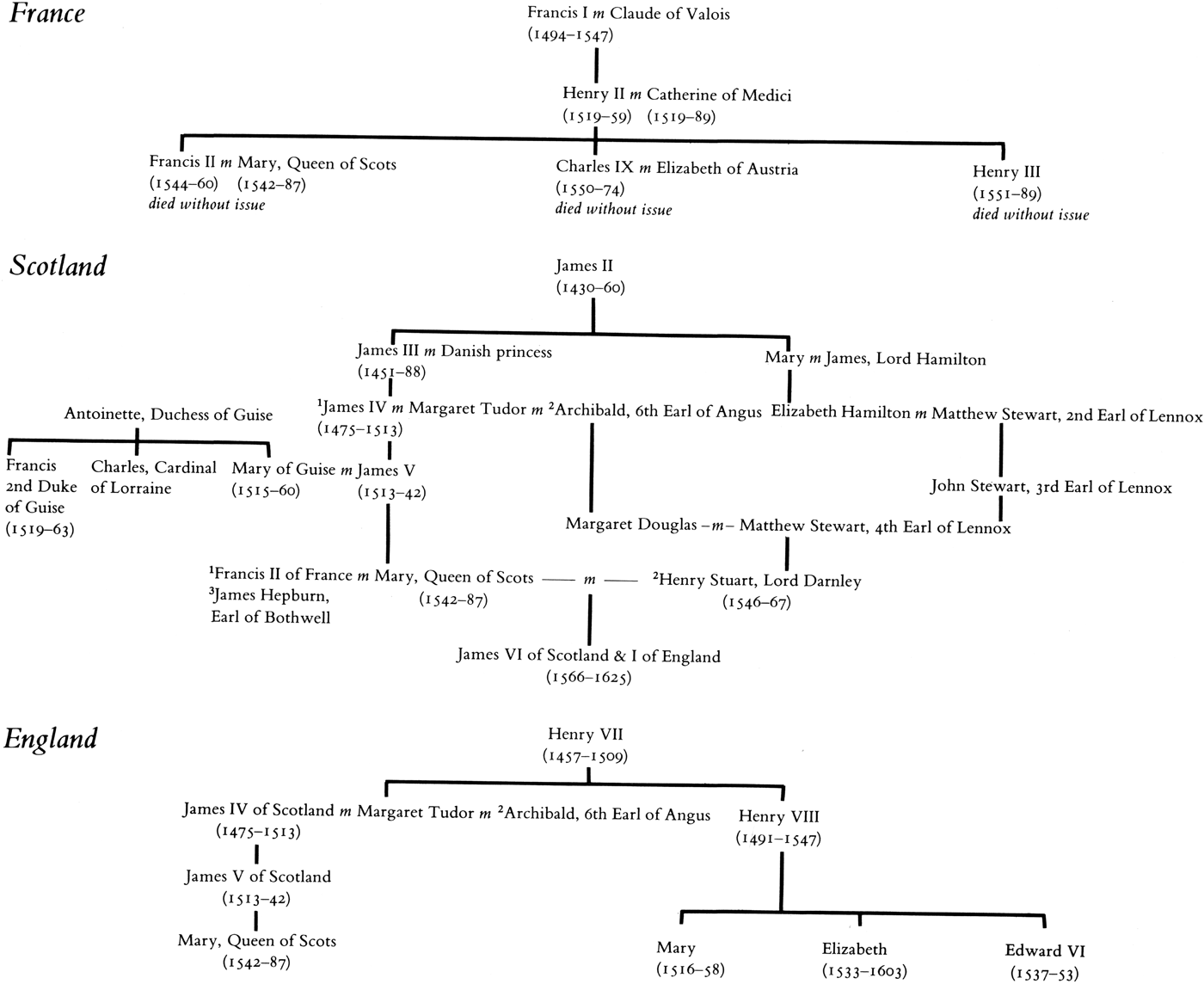
Calendar
| 1542 | 8 December | Birth of Mary Stuart, daughter of James V of Scotland and Marie de Guise. |
| 14 December | Death of James V. Mary succeeded to the throne of Scotland. |
| 1543 | 9 September | Coronation of the infant Queen of Scots. |
| 1548 | 7 August | Mary sent to France to be brought up with the children of the French King, Henry II. |
| 1558 | 24 April | Marriage of Mary and Francis, Dauphin of France. |
| 17 November | Elizabeth succeeded to the throne of England. |
| 1559 | 10 July | Death of Henry II. The Dauphin became Francis II of France and Mary became Queen of France. |
| 1560 | 11 June | Death of Marie de Guise, Regent of Scotland. |
| 11 August | The Scottish parliament established the reformed Protestant religion in Scotland. |
| 5 December | Death of Francis II, succeeded by his young brother Charles IX. |
| 1561 | 19 August | Mary returned to Scotland. |
| 1562 | August September | Mary visited Inverness and Aberdeen. Rebellion of the Earl of Huntly and his son. |
| 1565 | 29 July | Mary married Henry, Lord Darnley as her second husband. |
| 1566 | 9 March | Murder of Marys secretary, David Rizzio. |
| 19 June | Birth of Marys son, James, later James VI of Scotland and 1 of England. |
| 1567 | 10 February | Murder of Darnley. |
| 15 May | Mary married James Hepburn, Earl of Bothwell as her third husband. |
| 15 June | Battle of Carberry Hill. Mary taken prisoner by her nobles. Bothwell outlawed and escaped to Denmark, where he later died in prison. |
| 16 June | Mary imprisoned in the island of Lochleven. |
| 29 July | The infant James crowned King of Scots, after Mary had signed an instrument of abdication. James Stewart, Earl of Moray became Regent. |
| 1568 | 2 May | Mary escaped from Lochleven. |
| May | Marys supporters were defeated at the battle of Langside. |
| 16 May | Mary fled to England, landing at Workington, Cumberland. |
| 18 May | Mary lodged in Carlisle Castle, afterwards moved to Bolton Castle, Yorkshire. |
| 1569 | January | The Earl of Shrewsbury became the custodian of Mary, first at Tutbury Castle, then at Sheffield. |
| 1570 | Secret marriage plans between Mary and the Duke of Norfolk. |
| 1572 | Execution of the Duke of Norfolk for his part in the plot against Queen Elizabeth. |
| 1584 | Mary taken from the charge of the Earl of Shrewsbury. |
| 1585 | January | Imprisoned at Tutbury under Sir Amyas Paulet. |
| Autumn | Moved to Chartley Hall, Staffordshire. |
| 1586 | The Babington Plot. |
| September | Mary taken to Fotheringhay Castle. |
Next page
